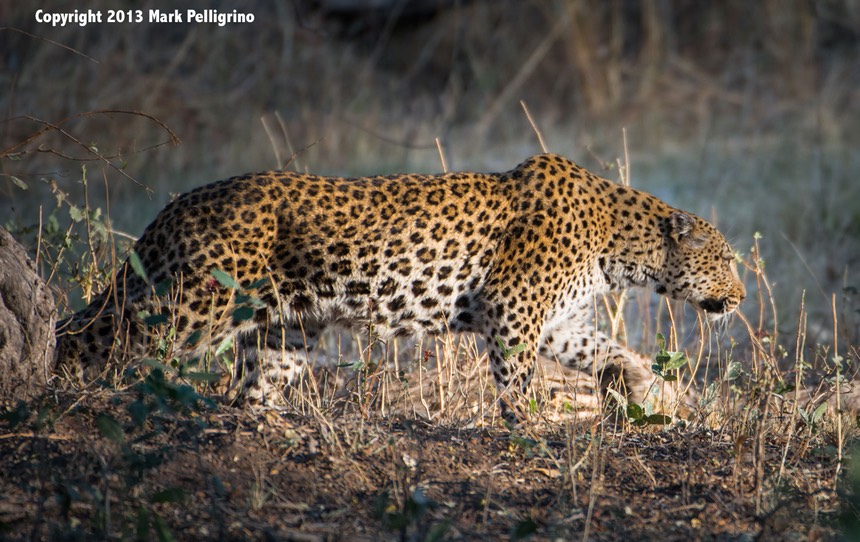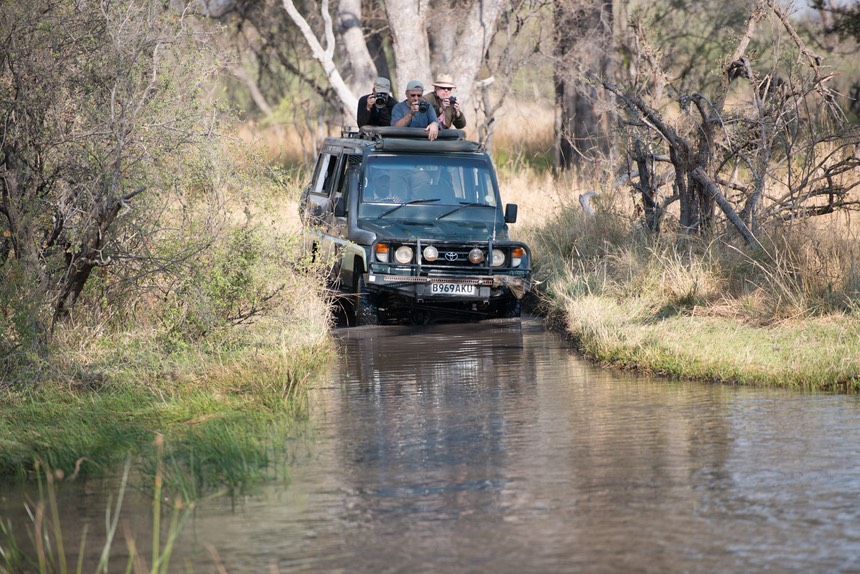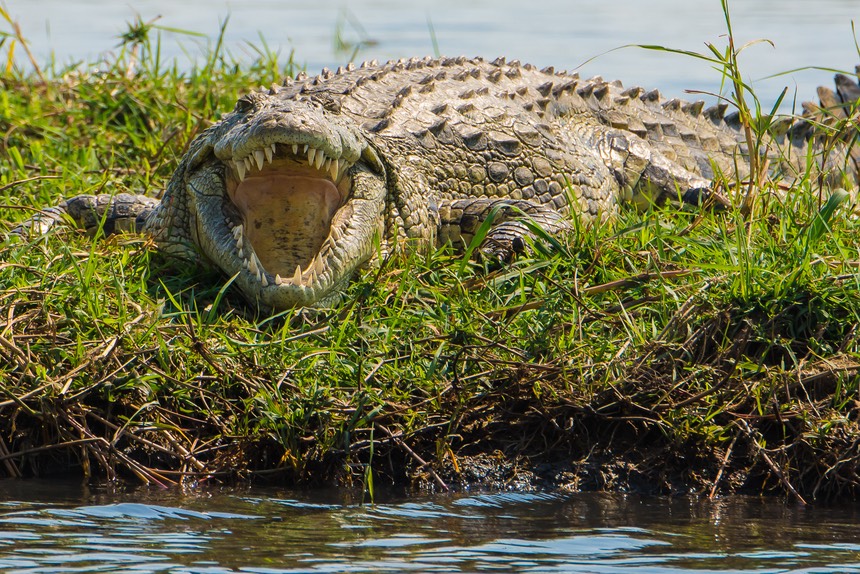It seems I have a few photos supplied to me that didn't make it into the daily blog postings or came to me after I'd already posted a day, so I'm going to put those here with a bit of commentary.
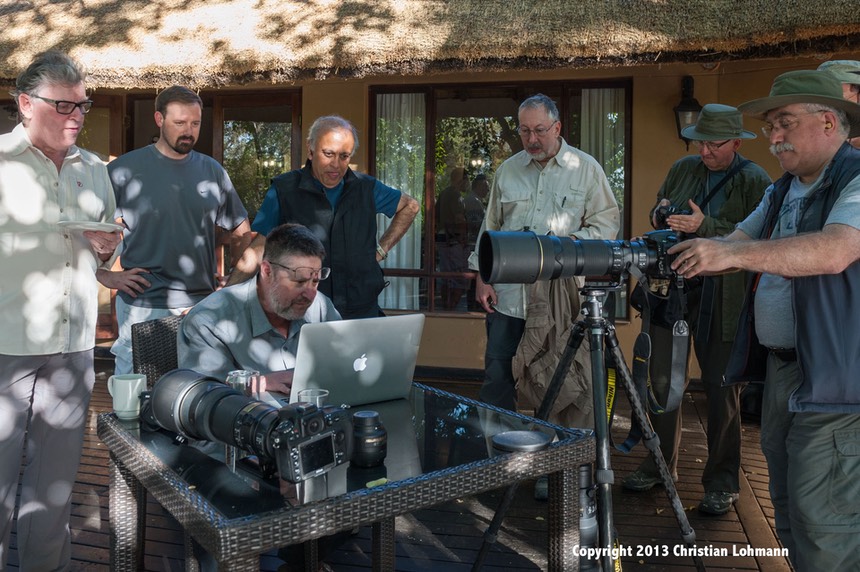
AF Fine Tuning Time. Tony's over there on the right doing the shooting while I'm eyeballing the results to get camera/lens combinations set accurately. The target is off screen to the left. I've been having quite a running commentary to the providers of test software for AF Fine Tune lately. What I see working in the field is not the values that most people are setting via software programs at home. Perhaps when I get time I'll try to cover the full set of technical issues that are causing people to have problems with getting their camera/lens combinations dialed in. I will say this, though: don't do your tuning in artificial light unless that's what you shoot under, and be prepared to have real issues with teleconverters due to the extra mount tolerances that come into play. For wildlife shooting, we often are putting three or four values into the camera (70-200mm at 200mm, long lens at max focal length, long lens with TC). Those values aren't predictable. In other words, if your 70-200mm needs +2, your 200-400mm might need -5, and your 200-400mm with TC might need +20. There are no shortcuts that I know of for doing this work. It takes a lot of care and discipline to do right, and it takes a lot of time, too.
One thing a lot of folk are getting wrong is focusing on a target in the center, and trying to read the value with a ruler or objects to the side. Field curvature and other things can really hurt you here. I've worked with more than one person who was getting false results because they were "reading" the focus point from information too far from center, which is where the focus system was focused. For example, if you're using a LensAlign target, I now suggest that you slide it over so the ruler is centered in the frame after you acquire focus from the center point. That, unfortunately, isn't easy to do and keep alignment absolutely perfect, as the chart wasn't designed for that (hint: use a tripod for the chart and mount the chart using a sliding bar; but you'll have to spend time to make sure the bar is parallel to the sensor).
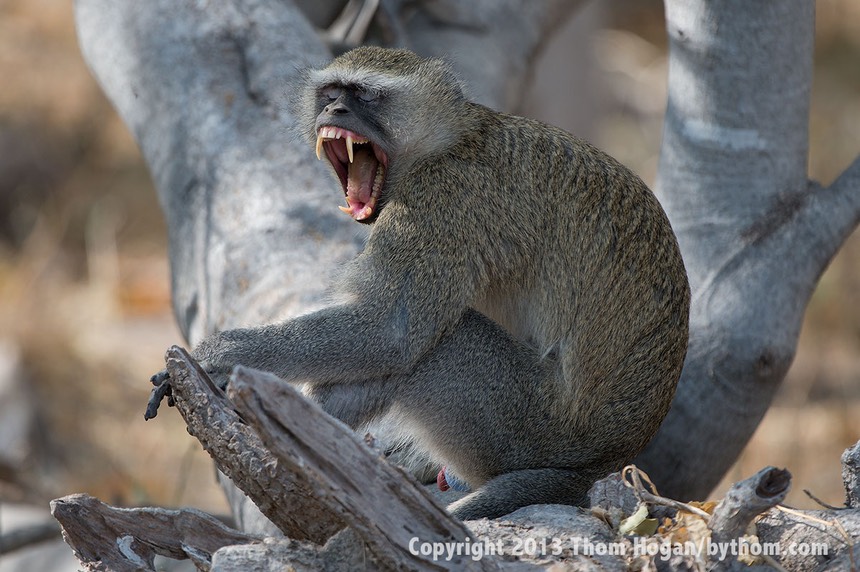
I see so many other vehicles in Africa doing the wrong thing. They find an animal, speed over to it (first mistake), let everyone take their photos, then speed off looking for something else. I've even seen photo workshops where the instructor should know better do this. I noticed that both the vehicle Tony was in and the one I was in tended to stay in one place more often than the other two. Part of that is guide/drivers. They're tuned towards providing instant and constant gratification. Left on their own, they'll give you a few minutes with an animal, then head off to find something else. This is the grass is always greener on the other side of the fence problem. The next animal will be awesome, let's go find it.
That's especially true when the animal just seems to be sitting there. That was true of this monkey for instance. Totally boring. Sitting there watching me watch it for the longest time. In fact, I bored him so much he eventually had to yawn. Click.
Wildlife photography is all about behaviors. You want to capture something other than a head shot of the animal. Give me a behavior, please! But here's the thing: the common behavior of wild animals if you drive up to them fast and stop is that they look at you for a moment, then move away. A few animals—lions come to mind—are exceptions to that, but even elephant can be skittish if you are following the common drive up, shoot, drive away practices I see all the time.
You have to be patient. Eventually, all animals will do something ;~). Indeed, the more they're comfortable with you, the more likely they just go about their business. That's one reason why I try to keep my wildlife workshops away from the worst of the day-trips and non photo tours: almost certainly if you're spotted sitting somewhere, those other vehicles will drive over to see what you're doing. Of course, most of the time those folk aren't rewarded with anything when they drive over to see what I'm doing, because I'm just waiting. No kill? No predator? No animal-on-animal action? Boring. And off the other vehicle goes…Meanwhile, I sit and wait and every now and then you'll here a shutter click.
Funny thing is, that leopard shot I took at the pre-workshop? When we got there only one other vehicle was there. At one point there were six vehicles. By the time I took my best shot, we were the only one there. Moral of the story is: make sure you're going to these exotic places with a group that will take its time and do it right. I can recommend Andy Biggs and Chaz Glatzer, for instance, because I know both of them know and follow what I've written just above. But not all photo instructors do. Even for things like landscape photography.
I tell a story about a Yosemite workshop where we ate dinner early and then headed out to what I thought would be a great sunset location. It was going to be, but when we pulled up there was another photo workshop of 30 people (!) scattered in the positions my little group of 5 would have wanted. My mind was scrambling to figure out another spot we could get to quickly that was as good when I heard the instructor for that workshop yell out "Okay gang, time to pack up and head to dinner." Call me gobsmacked. What the? Sure enough, the 30 photographers abandoned their positions 20 minutes before best light and my little group was able to get great shots.
While we sometimes have schedules we need to meet in Africa (e.g. on moving days), Adam has learned that I'll push us off that schedule if something great is happening (or about to happen). He's fine with that. Indeed, I think he enjoys that, both because we're taking in Africa the right way and because it just gives him another logistical problem to solve ;~).
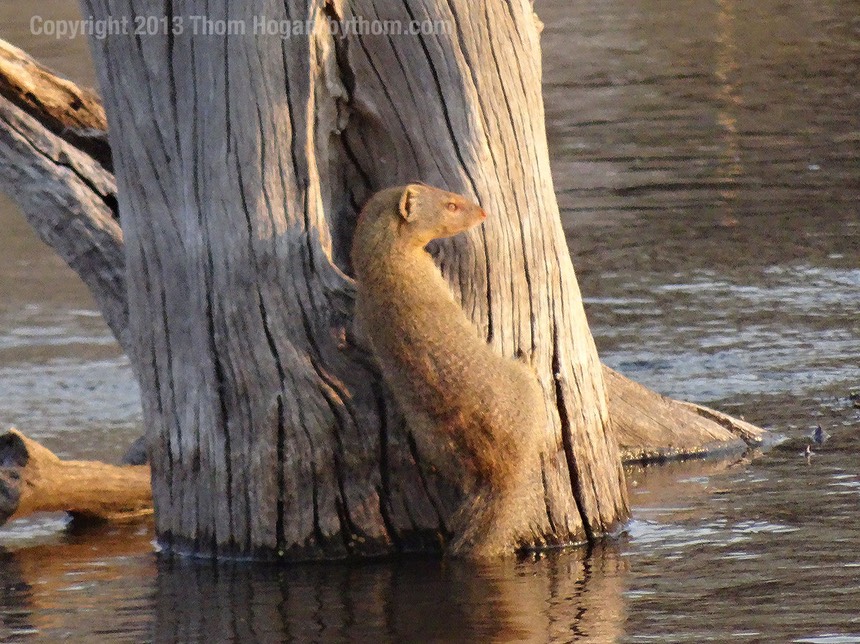
Not a particularly great shot, mostly because it was taken with a cheap compact camera, but we've been glossing over a number of things that you typically see on a two-week trip like this. This mongoose made an elaborate dance to get over to this stump in the water, because things like to live in those holes in the sides of stumps. Someone, I forget who, got some great mongoose in termite mound shots in Chobe. You really have to treat every living thing equally. They all have behaviors that make for interesting shots. You just have to be looking for them and patient.
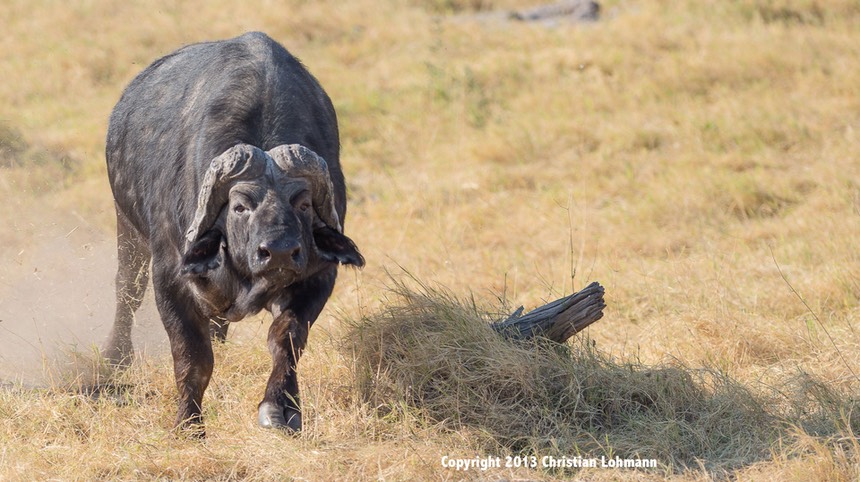
Some pictures have stories. I believe the story behind this one is that this is the buffalo that charged one of our Land Cruisers (note the dust kicked up behind the buffalo). I don't know the story, so didn't stick this image into the daily blog. But I'm sure Christian is telling the story when he shows everyone this photo. Corollary: if there's a story brewing, take photos!
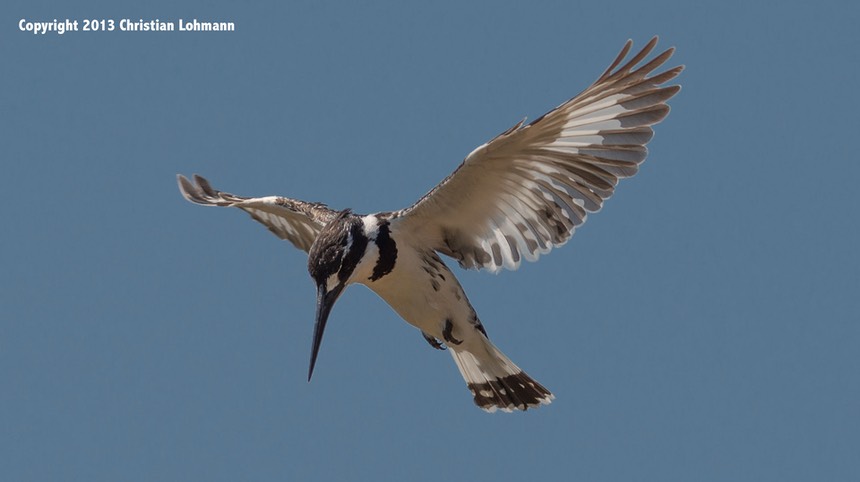
And speaking of stories, I wanted to save this image for discussion outside the daily blog. It's actually a very nice shot of a Kingfisher fishing. I have a couple of similar ones in my files. But here's the thing about stories: does this photo actually tell the story by itself? Well, it might if you were an ornithologist: you'd know exactly what's going on here. But my mom might not know the story.
This is one of the toughest things to do in the wild: get the full story in the picture. What's missing here? The pond that has the fish in it! Everyone tries to shoot this as a horizontal shot (wings are out, after all). But it's actually a vertical shot! We want to see the bird hovering at the top of the frame and what he's hovering over at the bottom. Then the bird's head position starts to make some sense to the casual viewer.
Great wildlife photographers will tell you that it's always about context: get the environmental context into the shot as well as the animal. Now, I'm not picking on Christian here. As I noted, I've got the same shot in my files from this trip. Succeeding at getting the contextual shot is difficult. Very difficult. I haven't yet succeeded at it, though I've certainly tried. So I'll take the reference shot of the bird if that's all I'm in position to do, but I'm still looking for the perfect contextual shot.
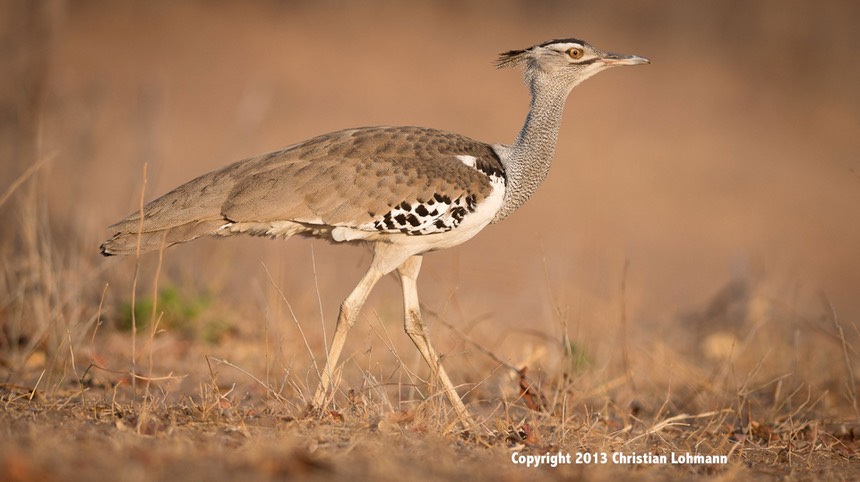
On the other hand, there is some context here, though you might not notice it at first. This bird is extremely well colored for the environment it walks in. It's basically camouflaged. I've been in vehicles telling people "there's a secretary bird to shoot" and had the response back "where, I don't see a bird"). Christian has done very well here. He's down low with the bird, so that we appear to be in the environment with the bird. He's kept a narrow plane of focus so that the bird pops off the same colored background. The leg positions are good. About the only problem I could point out is that we can't see the feet (a common problem when you come down to ground level, and often unavoidable). I would have liked to have seen other variations of the DOF just to make sure that this is the "best" one, but I think Christian has pretty much nailed this shot.
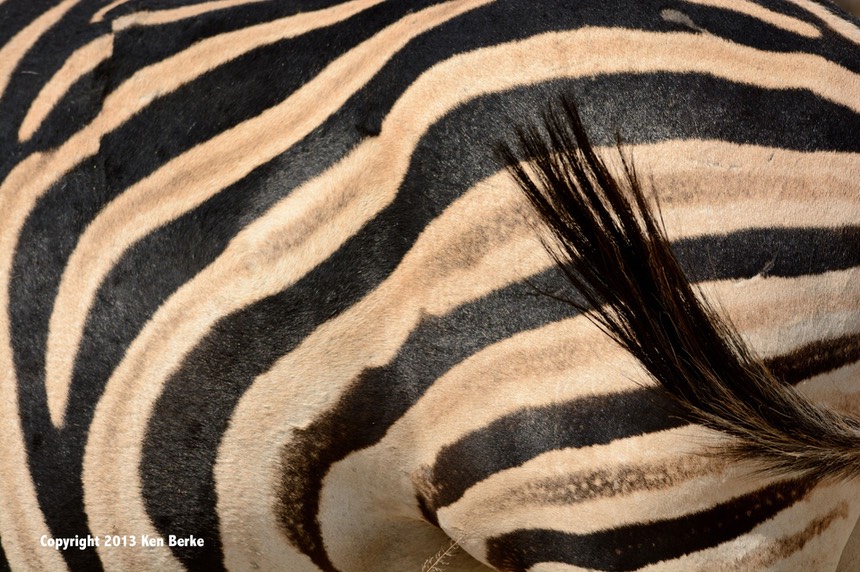
We had a long discussion about this photo at image review. I think everyone immediately loved the thing Ken was trying to do here. Isolation of detail of an animal is often very productive, and given how much time we spend with a lot of these animals, you usually have plenty of time to explore that.
I believe that at one point in the image review session I said "but how many stripes and how much tail do you need to know what this is?" Consider this crop, for instance:

Did we lose anything from Ken's choice? Probably not. Plus we don't have so many potential distractions, such as the strange "fold" in the upper left of the original that disrupts a couple of the stripes. I actually have a mantra statement I make when I teach about situations like this, but it won't make any sense to you readers unless you know my full teaching method (don't worry, I'll eventually get around to revealing it). I really like what Ken did here, but I think my final comment to him was that I'm not sure he got the perfect capture of it. I often say that about my own pictures, too. That's one of the tough things: you spend all that time in the field and you try your best, but you fail to see some small thing that would have made the shot better until you pull it up on your monitor at home and really look at it. The very best pros are really good about doing that while looking through the viewfinder. I can name a few pros that do it better than I do, though I think I'm getting closer.
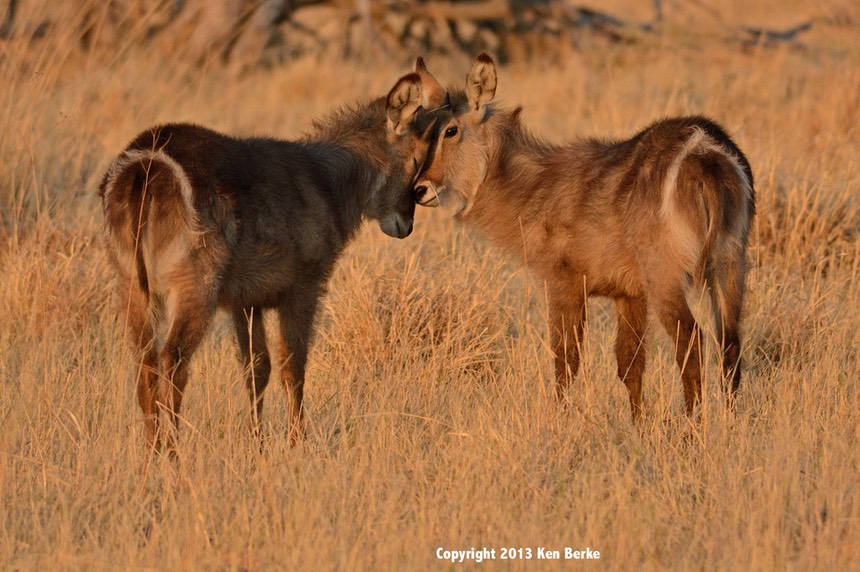
Probably a little difficult to see the expression of the left-hand waterbuck, but any time animals come together I'm looking for this type of shot. As I've mentioned, lions will always touch heads when the come back together after being apart, but a lot of animals in the wild will do similar things. There's always a good shot there when it happens. So one of the things I say often on workshops like this is: watch for animal interactions.
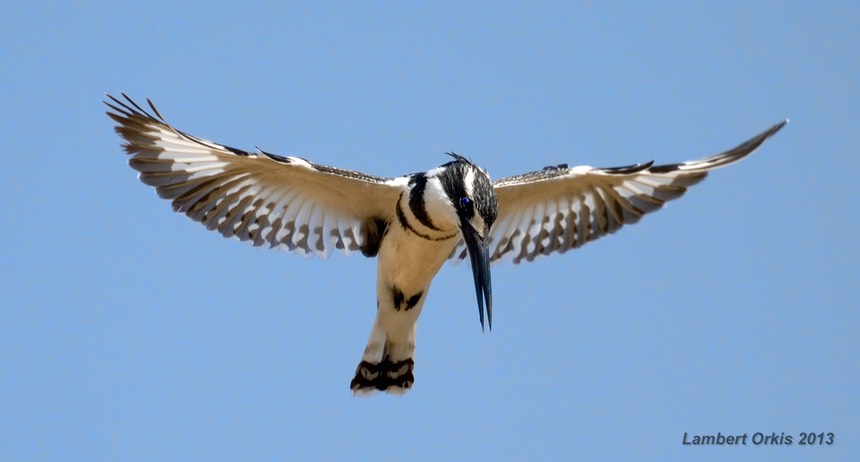
Hey, wait, didn't I already write about that?
Lambert—yes, he's that Lambert Orkis, a very world-renknowned pianist—loves birds. Put him and Tony in the same vehicle and you were outvoted: you're going to shoot birds today. Lambert already had a good eye when I got hold of him. I think he improved visibly on the trip as he started to put my teaching to good use.

One of the things about Lambert was that he was getting different photos from a lot of the other students. I try to teach in a way that pulls that out of the students, but Lambert was getting there faster and more often than the others. I think that's because he was using the same thing that drives him as a musician. The Brahms Sonatas for piano and violin that are one of his specialties, for instance, are a bunch of notes that don't change on the paper. It's the interpretation of those notes and how you style and relate them that makes an Orkis recording different than Vogt's, for instance. What I found Lambert trying to do with his camera is the same thing: interpret the world in front of him. Obviously my symphony background and Lambert's meshed quickly and we were able to use a completely different vocabulary (musical) to talk about photography during the trip. So let's just listen to Orkis for a moment:
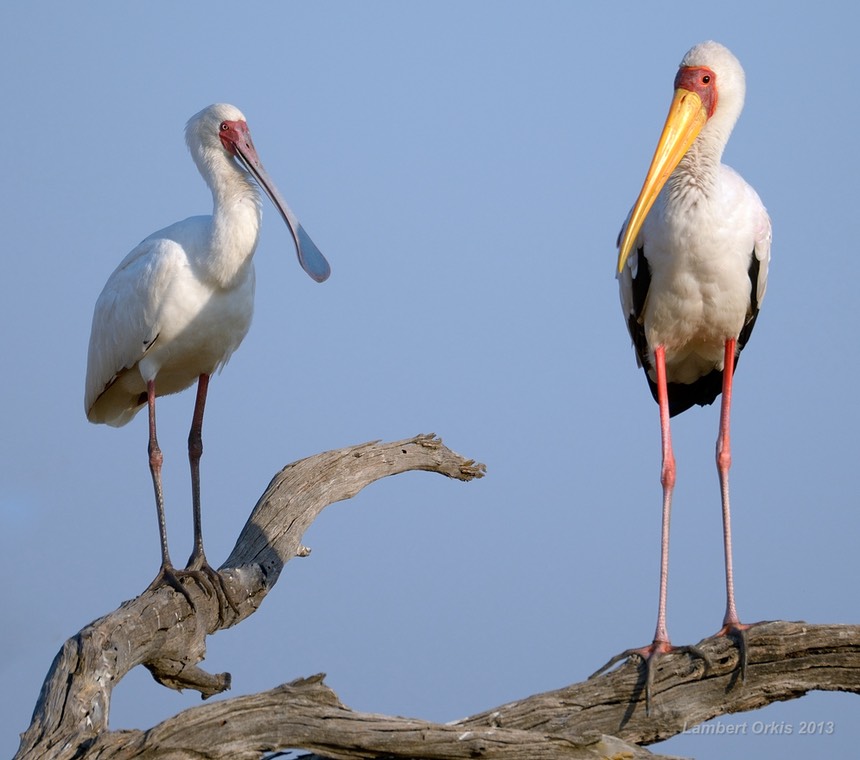
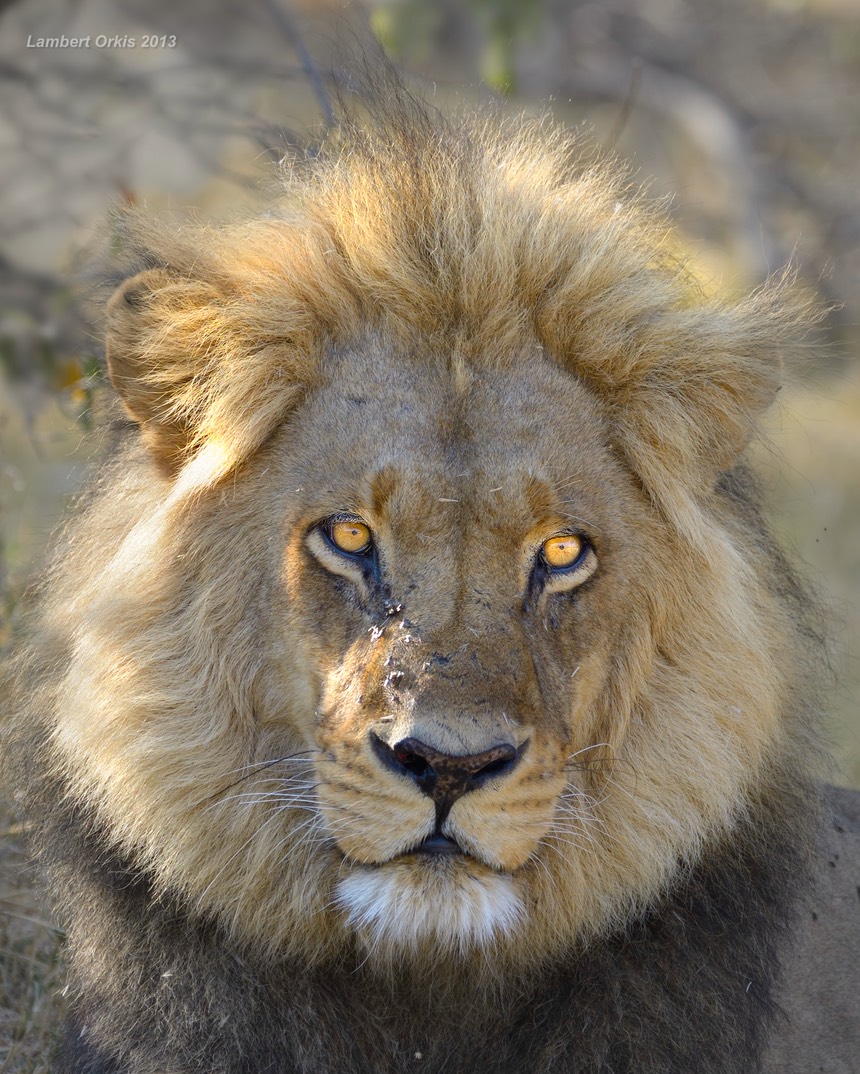
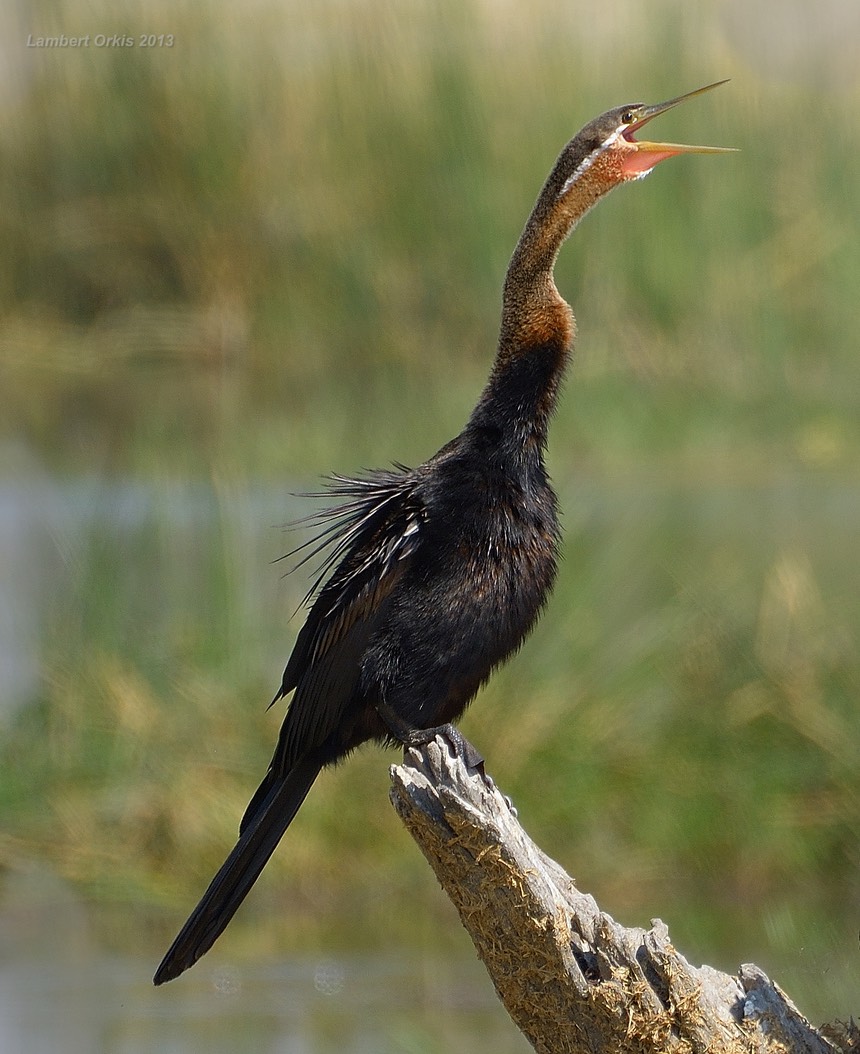
I did notice that Orkis took a lot of shots of birds with their beaks open ;~). I think he thinks they're singing to him.
Finally, I couldn't resist this last Orkis shot, but not because of anything Orkis did: it's the look on Jono's face as he drives through the water:
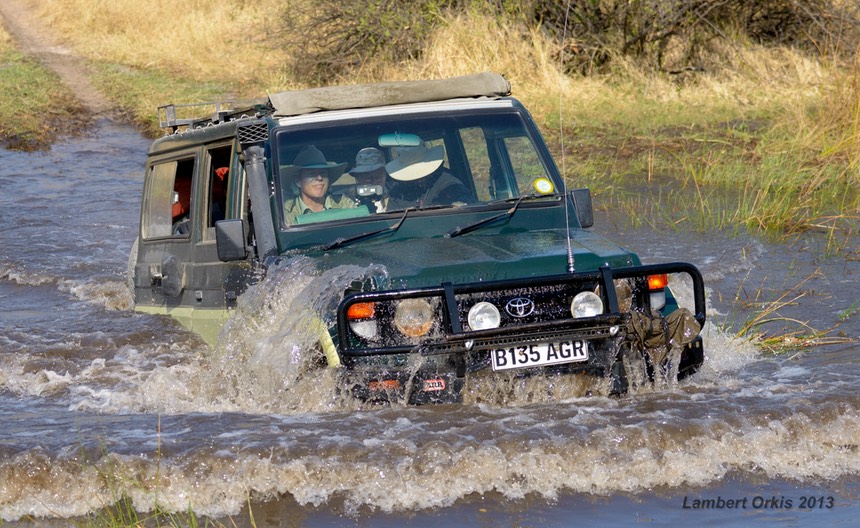
It's funny: virtually every shot I've seen of him driving through the water he has this very self-satisfied look on his face. In case you can't see it in the image above:
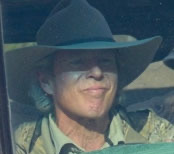
Since he's Australian, I could just imagine him thinking to himself: "Water? You call that water?"
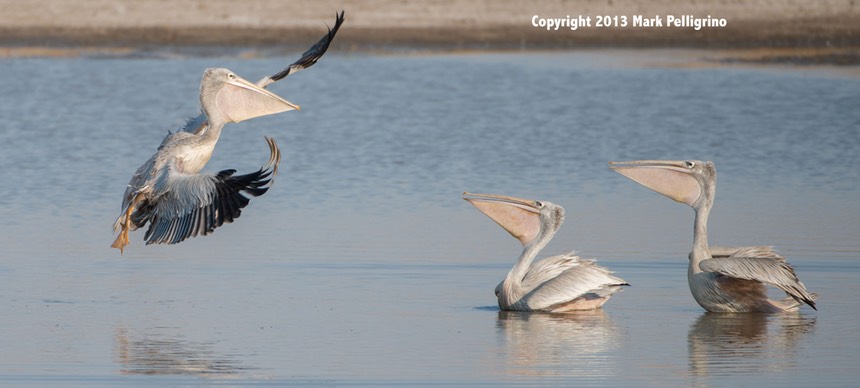
Again, is there a story here? Sure, as a matter of fact, you can even make one up as a viewer. Will he stick the landing? The judges are watching carefully.
Here are some more images I don't know the story behind, so they ended up here instead of in my narrative:
